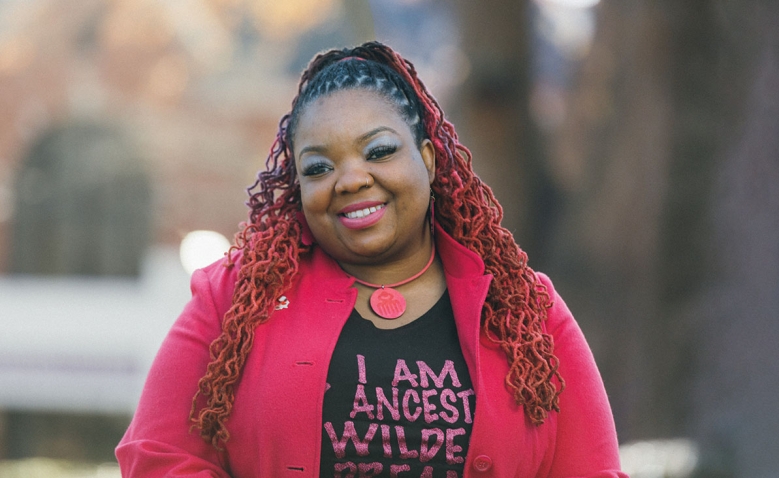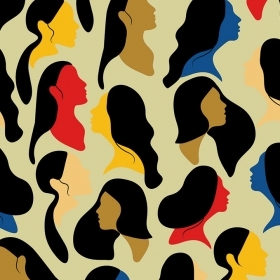Photo by Lynsey Weatherspoon
“If there were a culmination of my academic experience, this would be it,” says LaShawnda Lindsay, research scientist at the Wellesley Centers for Women. “It’s my dream course.”
An educational psychologist by training, her research at the centers focuses on studying and removing the social, racial, and cultural obstacles that hinder the progress of Black girls and women. In her course Black Girlhood Studies, last fall cross-listed in the Africana studies and education departments, Lindsay drew upon her decades of scholarship, as well as a lifetime of lived experience, to help students examine growing up Black and female in America. “I always ask [my students] when we are reading things: ‘Whose narrative is being represented? Is it the narrative of Black girls or someone’s perception of Black girlhood?’” she says.
“Black girlhood is not monolithic,” she says. “My Black girlhood is different than my mom’s and my grandmother’s and my nieces’ who are coming up now. Growing up in Florida”—she is from Jacksonville—“is qualitatively different than growing up in Massachusetts. I have clients who grew up in the North, and they struggle more with their identity than my clients who grew up in the South, because their Black identity is more salient in the North.”
In addition to a master’s and Ph.D. in educational psychology, Lindsay also holds a graduate certificate in women’s studies and a second master’s in clinical mental-health counseling. She also has a private counseling practice. This spring, she will teach a course on another area of her expertise: Black psychology.
A self-described “maker, artist, entrepreneur, scholar, craftswoman, and activist,” she has taken research on roads to success for young Black women and put it into action in the form of an education program based in Dorchester, Mass., called Black Girls Create. Launched in 2018 under the auspices of the Wellesley Centers for Women, it seeks to increase Black girls’ involvement in STEM disciplines by showcasing Black women STEM pioneers and teaching the girls to use digital fabrication equipment to produce fashion accessories. For example, a student assigned to study the career of Mae Jemison, NASA’s first Black female astronaut, might use a 3D printer or vinyl cutter to create a keychain or pair of earrings in the shape of a rocket.
“A lot of STEM programs still have a male-centered narrative and framework,” she says. “Some girls may not be interested in robotics, so this is a way to get them involved in STEM in another way.” Digital fabrication requires students to develop mathematical, engineering, and spatial skills—all of which are transferable both in and out of the classroom.
Lindsay took up crafting herself in 2013 as a way to unwind after work. “I would go to the Makerspace in Framingham at night and just play around with the machinery and learn how to use it,” she says. “I ended up creating more things than I could deal with, so I started to sell them, and now it has become a part of my research.” Under the name Ananse Design Essentials, she makes and sells a line of African-inspired jewelry and (since last April) a lot of face masks.
“I am a maker by night and a scholar by day,” she says.








We ask that those who engage in Wellesley magazine's online community act with honesty, integrity, and respect. (Remember the honor code, alums?) We reserve the right to remove comments by impersonators or comments that are not civil and relevant to the subject at hand. By posting here, you are permitting Wellesley magazine to edit and republish your comment in all media. Please remember that all posts are public.